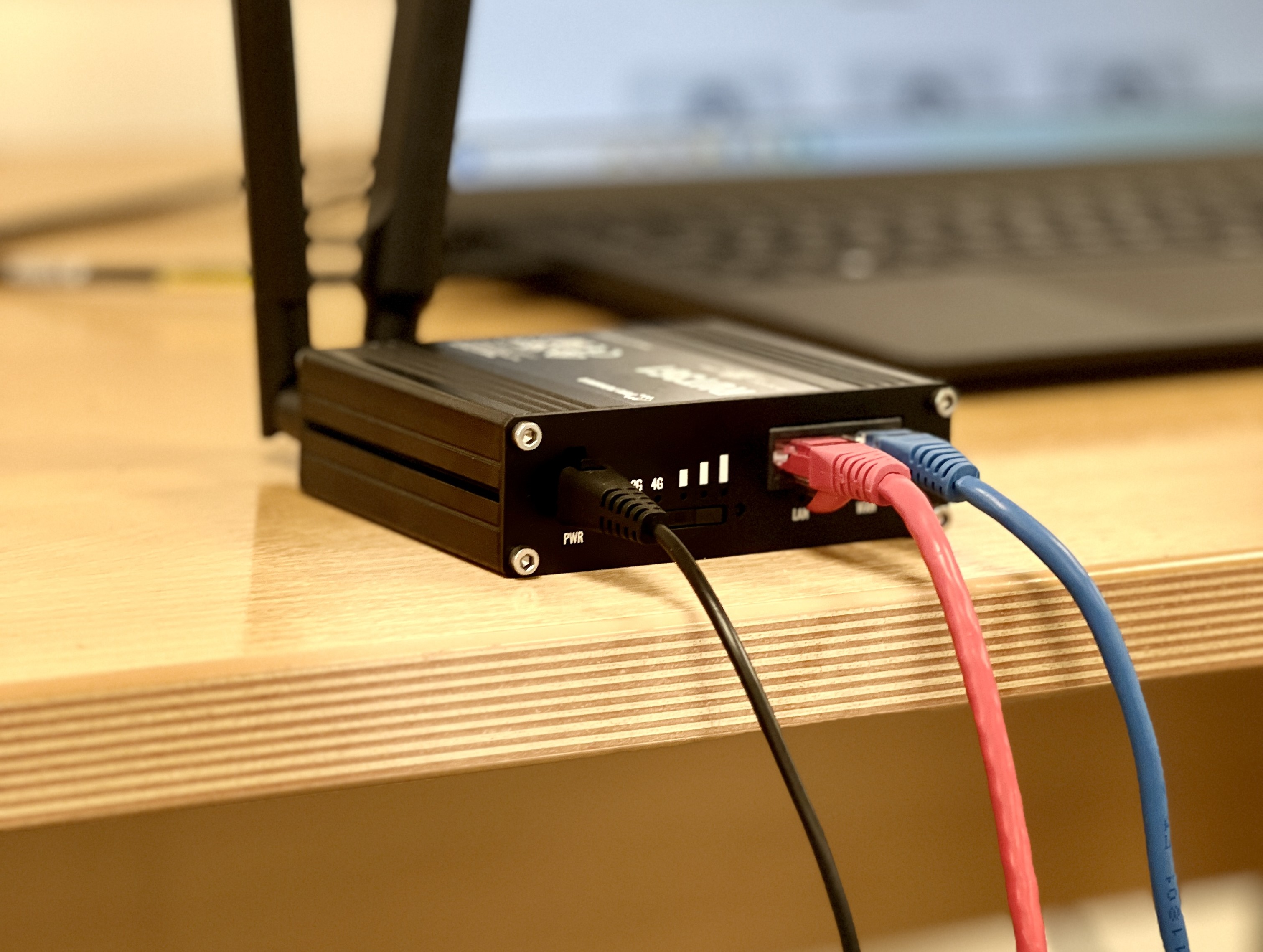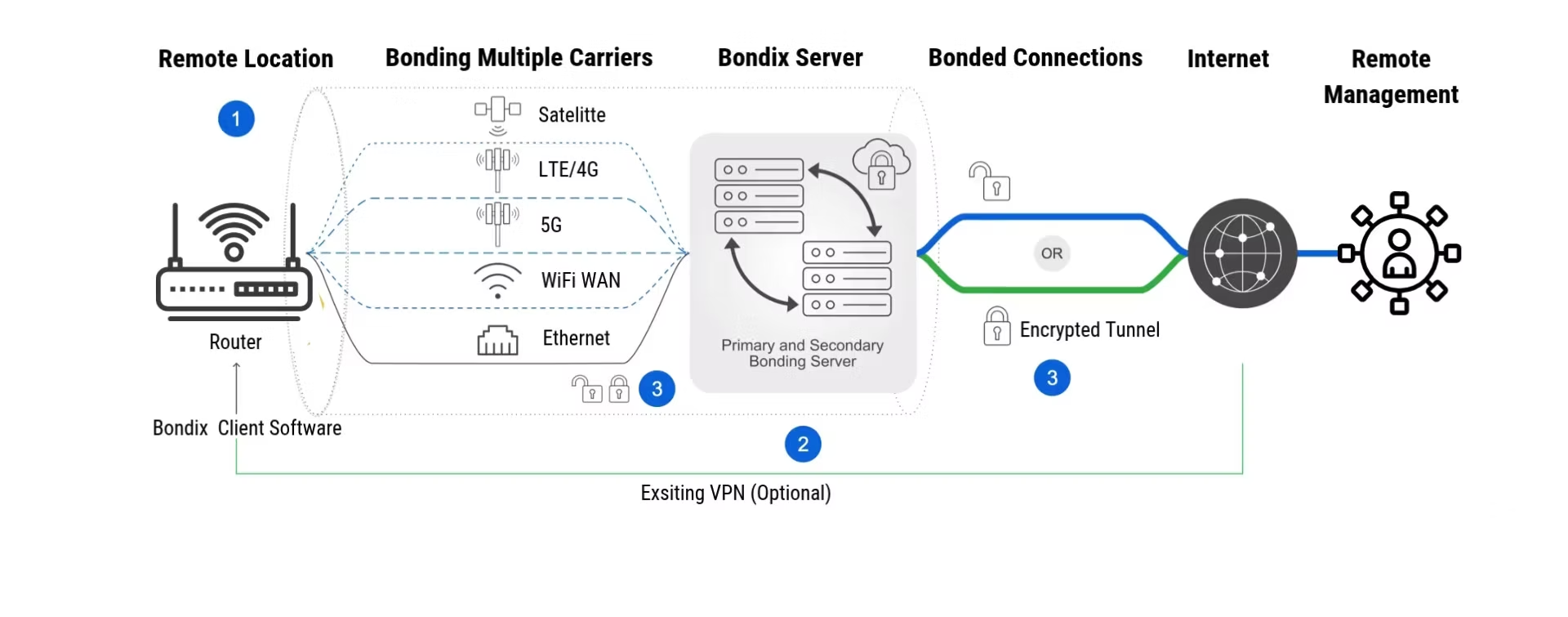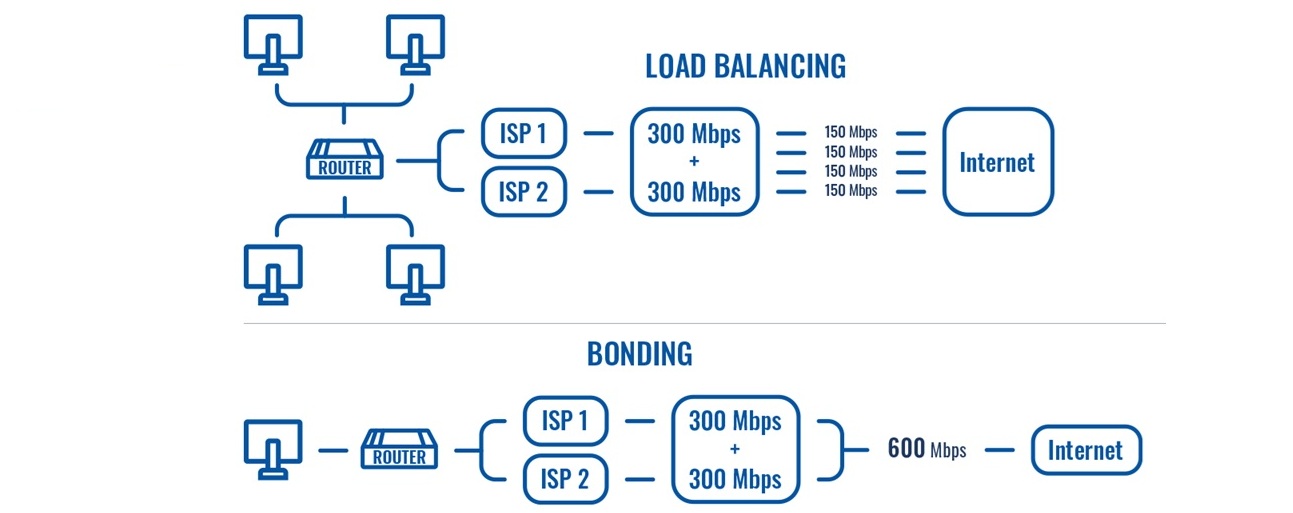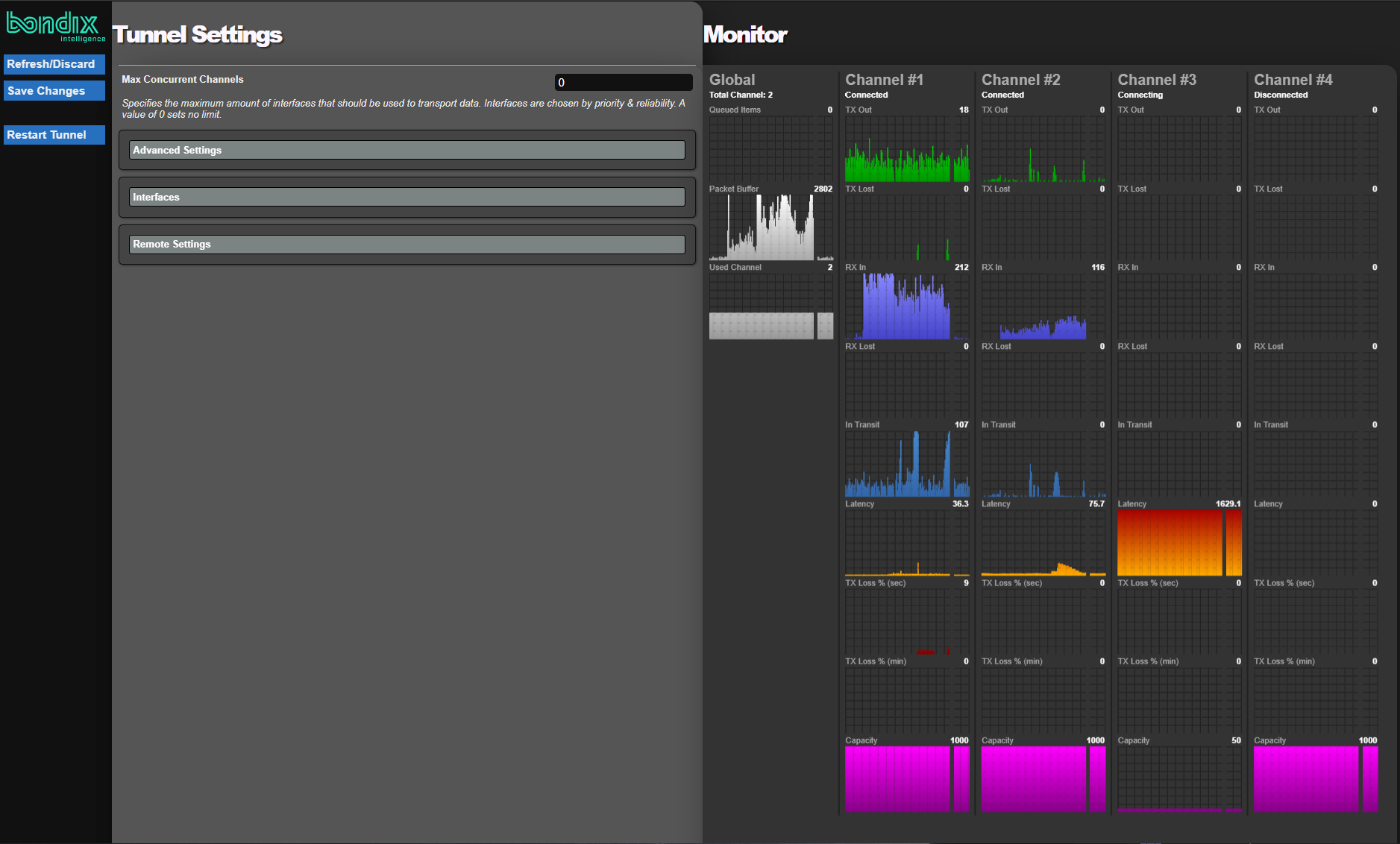
Think Fibre’s the Only Way to Deliver High Throughput? Say Hello to WAN Bonding.
Think Fibre’s the Only Way to Deliver High Throughput? Say Hello to WAN Bonding.
Many businesses now depend on consistent, high-quality internet connections to operate effectively across a wide range of environments. From remote surveillance feeds and remote healthcare to hybrid work and mobile operations, organisations are relying on consistent, high-bandwidth connectivity to deliver services without interruption. While fibre is often seen as the ideal connectivity solution, it’s not always available and is sometimes not the best option, particularly in rural sites, mobile setups, or temporary deployments.
This is where WAN bonding really comes into its own.
What Is WAN Bonding?
WAN bonding is a method of combining multiple internet connections – such as 4G/5G cellular links, fixed broadband, or satellite – into a single virtual connection. Unlike traditional failover or load balancing methods, bonding aggregates (combines) all active links simultaneously, enhancing both resilience and performance.
The result? To the outside world, your network appears as a single, stable, high-capacity link, regardless of the underlying infrastructure. This is invaluable for scenarios where maintaining uptime or ensuring consistent throughput is critical.

Load Balancing: It’s A Good Start, But Not the Full Picture
It’s important to clarify the difference between load balancing and bonding, as the two are often confused.
Load balancing distributes traffic across multiple WAN connections, typically by assigning sessions, users or activities to different links. It’s a useful strategy for spreading demand and improving overall throughput. However, it comes with limitations – most notably the issue of session-based routing.
Each WAN interface in a load-balanced setup uses its own public IP address, which means that users or devices may experience IP address changes mid-session if the traffic is rerouted. This can cause interruptions in applications sensitive to IP consistency, such as:
- VPN connections
- Live video feeds
- Remote desktop tools
- Secure logins (e.g. banking, enterprise dashboards)
When a device suddenly appears to come from a different IP address, many services will end the session or prompt for re-authentication, causing frustration and downtime.
Bonding avoids this issue entirely by routing all traffic through a self or cloud-hosted bonding server, which provides a single, consistent IP address to all connected devices – regardless of how many WAN links are being used behind the scenes.
For instance, imagine a business uses a dual-radio router with two SIM cards from two networks and have download speeds of 50 Mb/s from EE and a 30 Mb/s from O2. Using load balancing, the network might be configured so that video calls - which require higher bandwidth and low latency - are routed primarily over the faster EE connection, while email and general web browsing traffic use the O2 link. This helps make efficient use of both connections and can improve overall performance.
However, setting this up requires technical knowledge to define which types of traffic use which connection (often called policy-based routing). Also, because each connection has its own public IP address, switching between links during a session can cause interruptions in services that depend on a consistent IP, such as video calls or VPNs. And crucially, load balancing can’t aggregate bandwidth. This means that a single task will never benefit from the full speeds available.

Why Bonding Makes a Difference
Unlike load balancing, which splits traffic across different links, bonding can do that and combine all your connections into one faster, stronger and more reliable link. This means it can both send specific tasks to the best connection but also pool all the available data links together (think mobile broadband, fixed lines where available, even Starlink…) to give you supercharged internet speeds.
The benefits of bonding become particularly evident in connectivity-critical or data-hungry environments:
- CCTV & Surveillance
Remote monitoring systems rely on stable upstream bandwidth to deliver live video streams to security teams or storage platforms. WAN bonding ensures uninterrupted footage even if one or more connections degrade, while allowing multiple mobile networks to work together.
- Mobile Operations (Vans, Buses, Events)
Whether it’s a mobile command centre, broadcast van, or public Wi-Fi service at an event, bonding allows multiple 4G/5G links to create a stable and high-capacity internet connection, essential for services that move through areas with varying signal strength.
- Temporary or Remote Sites
Construction sites, offshore wind farms, or pop-up retail locations often lack fixed-line internet access. Bonding cellular connections from multiple carriers gives them enterprise-grade internet performance, even in areas where individual connections may be patchy or overloaded.
- Business Continuity & Failover
Even in permanent offices, combining fibre with one or more mobile data links can provide a seamless failover solution, ensuring users remain connected without dropped video calls or VPN sessions.
Software-Based Bonding: Performance Without the Premium
Traditionally, WAN bonding has required high-end, proprietary hardware with associated licensing costs – often limiting deployment to larger enterprises. As a result, bonding can feel out of reach for smaller businesses or for scenarios that require multiple bonded devices, such as fleets of vehicles or remote sites.
However, software-based bonding solutions such as Bondix by SIMA are transforming this landscape. Bondix enables bonding on more affordable, industrial-grade routers like the Teltonika RUT series, which feature multiple LTE/ 5G modems and Ethernet ports at a fraction of the cost of the alternative.
This approach opens up bonded connectivity to:
- Smaller organisations
- Local authorities
- Security and construction firms
- Managed service providers (MSPs)
By decoupling bonding from expensive hardware, it becomes possible to deploy reliable multi-WAN connectivity at scale without blowing the budget.

Not All Bonding Is Equal – The Bondix Advantage

Bondix offers a lightweight, efficient bonding engine that runs directly on supported routers – no need for bulky middleware or excessive processing power. Its flexibility allows for:
- Cloud or self-hosted aggregation servers
- Real-time failover with sub-second switchover
- Full use of available upload and download bandwidth
- Seamless IP continuity for all devices behind the router
As a software solution, Bondix can be easily updated and maintained, providing long-term scalability without hardware obsolescence.
Is Bonding the Right Solution for You?
The demand for resilient, high-throughput internet is only growing. If your business relies on:
- Live or real-time data transmission
- Remote access to equipment or systems
- Applications or services that need higher throughput and faster speeds
- A mobile or distributed workforce
Then bonding becomes a key tool to meet your business’s connectivity demands. And with software-based options like Bondix, the barrier to entry has never been lower.
If you’d like to learn more about bonding, explore Bondix solutions for your project, or discover how to achieve faster speeds and greater throughput than you might expect, get in touch with us for a demo. We’ll show you how to supercharge your connectivity and deliver the fastest, most reliable connection possible.
Contact Us!